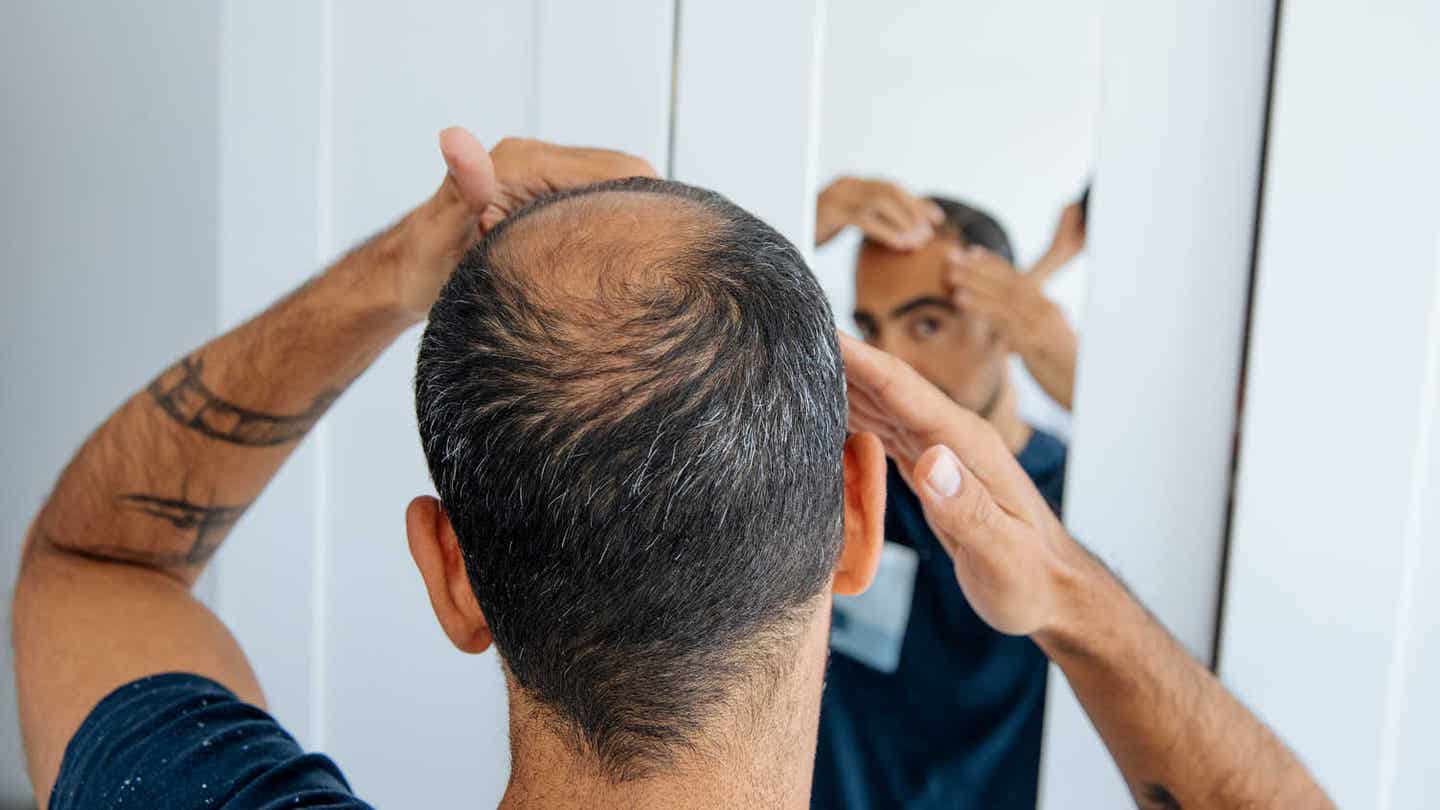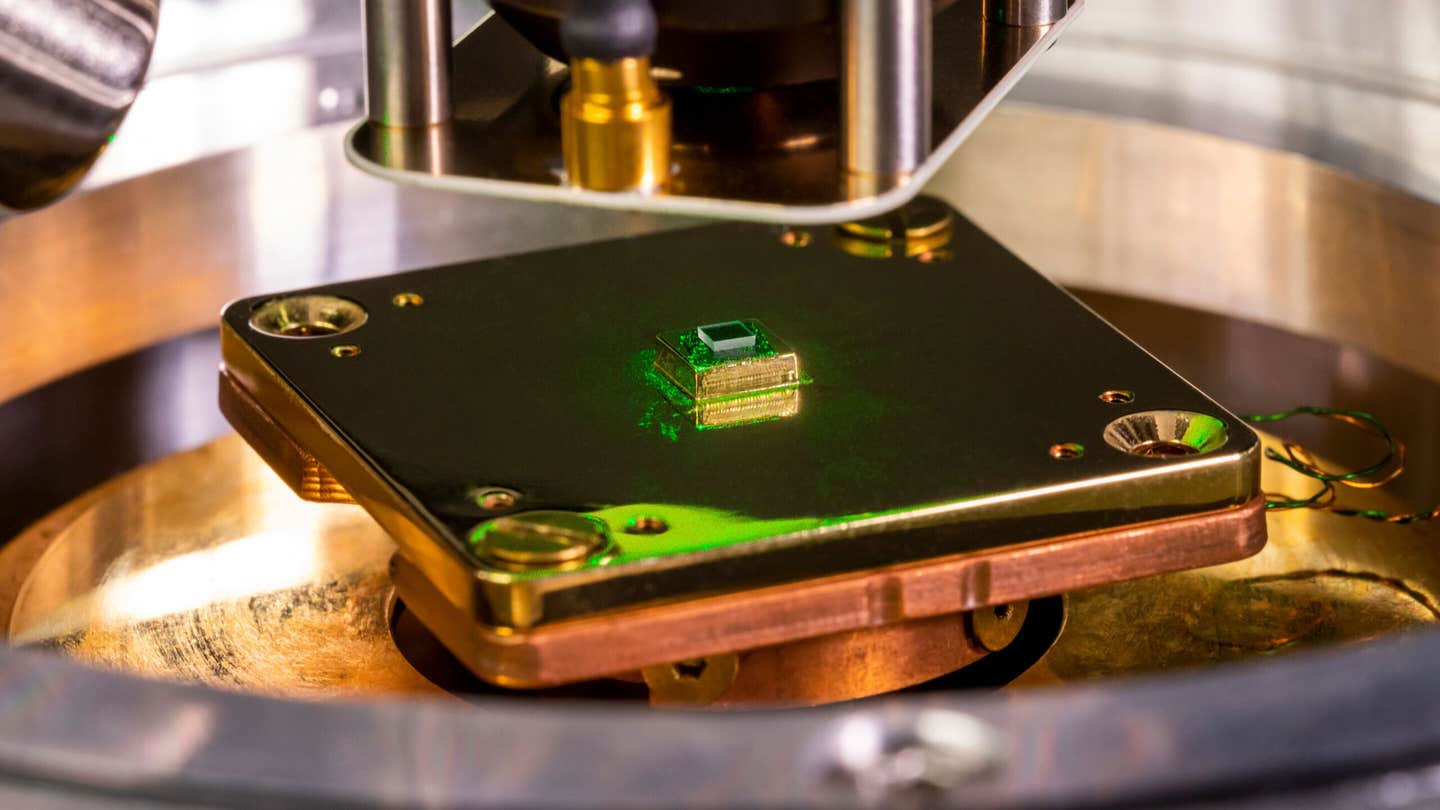Hair loss breakthrough: Sugar gel boosts regrowth by 90 percent
New study shows a natural sugar gel regrows hair in mice, offering hope for safer treatment of hereditary-pattern baldness.

A new study finds that a naturally occurring sugar may regrow hair by boosting blood flow, matching the effects of minoxidil in mice. (CREDIT: Getty Images)
Hereditary-patterned baldness, also called androgenic alopecia, affects people across genders, ages, and ethnic backgrounds. By age 50, roughly half of Asian men and up to 80 percent of White men face visible hair thinning. Around 40 percent of White women show similar symptoms by age 70. This form of hair loss arises from a mix of genetics, hormones, and aging.
A key player in this process is dihydrotestosterone (DHT), a potent hormone that stems from testosterone. DHT binds to receptors in hair follicles, causing them to shrink. This shrinks the follicle's growth cycle and delays the start of new hair growth, eventually leading to hair loss.
Currently, only two FDA-approved treatments target androgenic alopecia: minoxidil and finasteride. Minoxidil (Rogaine) is a topical solution that increases blood flow to the scalp, while finasteride blocks the conversion of testosterone into DHT.
Both treatments have their limitations. Minoxidil may cause scalp irritation or even heart issues in rare cases. Finasteride, available only to men, carries risks like reduced libido, depression, and testicular pain.
A Surprising Sugar Discovery
In 2024, scientists from the University of Sheffield and COMSATS University in Pakistan uncovered a surprising link between sugar and hair regrowth. Their original goal was to study wound healing in mice using 2-deoxy-D-ribose (2dDR), a naturally occurring sugar found in DNA. During their tests, they observed faster fur regrowth around the treated areas on the mice.
This accidental finding raised a new question: Could 2dDR also reverse hair loss driven by hormones? To find out, researchers designed experiments using mice with testosterone-induced baldness—an established model of male-pattern hair loss.
They applied a gel containing 2dDR to the backs of the mice each day for 20 days. Other mice received minoxidil, both treatments combined, or a placebo gel. Throughout the trial, the team documented results with photos and tissue samples to compare changes.
Related Stories
Hair Regrowth Fueled by Blood Flow
The outcome was striking. Both minoxidil and 2dDR triggered robust hair regrowth, restoring up to 90 percent of the fur in treated mice. Mice treated with the sugar gel alone grew long, thick hairs comparable to those treated with minoxidil. Adding both together did not lead to much more improvement, suggesting that 2dDR could work just as well on its own.
Histological studies—the microscopic examination of skin tissues—revealed healthy, enlarged follicles and darker hair in mice treated with the sugar gel. Skin around the application site also showed more blood vessels and active skin cells.
These results point toward better blood supply as the likely reason behind the regrowth. Healthy hair growth depends heavily on nutrient delivery, and the gel appeared to stimulate this process.
“The better the blood supply to the hair bulb, the larger its diameter and the more hair growth,” the researchers explained in their study.
How a Simple Sugar Might Solve a Complex Problem
So how does this sugar work? Researchers believe 2dDR boosts a process called angiogenesis—the creation of new blood vessels. This process helps carry oxygen and nutrients to growing tissues, including hair follicles. The sugar has also been shown in earlier research to increase vascular endothelial growth factor (VEGF), a protein that plays a central role in blood vessel formation.
With stronger blood flow, follicles receive the support they need to produce thicker, longer hairs. This action mirrors minoxidil’s effect but may do so with fewer side effects, thanks to the sugar’s natural origin and biological compatibility.
"Our research suggests that the answer to treating hair loss might be as simple as using a naturally occurring deoxyribose sugar to boost the blood supply to the hair follicles," said Professor Sheila MacNeil from the University of Sheffield.
Professor Muhammad Yar of COMSATS University added that 2dDR is “naturally occurring, inexpensive, stable, and deliverable from various gels or dressings,” making it a promising base for future products.
Beyond Baldness: Wider Potential for Healing
The implications of this discovery could stretch beyond just hair loss. Chemotherapy often causes sudden and severe hair loss by damaging rapidly dividing cells, including those in hair follicles. A gel that accelerates hair regrowth could provide much-needed relief and emotional support for cancer patients recovering from treatment.
Lashes, eyebrows, and other body hair might also benefit from this treatment. Because 2dDR already plays a role in wound healing and tissue repair, researchers believe its applications could extend into other areas of regenerative medicine as well.
What sets this new approach apart is its low toxicity. The sugar gel, made with biodegradable and skin-safe materials like sodium alginate and propylene glycol, could reduce the health risks linked to existing medications.
“This is a badly under-researched area, and hence new approaches are needed,” wrote the authors in their study, published in Frontiers in Pharmacology.
What Comes Next for Sugar-Based Hair Therapy
Despite the promising results, the research is still in its early stages. So far, all tests have been performed only on male mice. The next step is to see whether similar results can be replicated in female mice and, eventually, human clinical trials.
Human testing is crucial to confirm the safety and effectiveness of 2dDR in real-world conditions. Scientists also aim to understand exactly how this sugar interacts with hair follicles on a molecular level.
“The research we have done is very much early stage,” noted MacNeil. “But the results are promising and warrant further investigation.”
If future studies support the findings, 2dDR could become a natural, affordable, and powerful alternative to existing hair loss treatments, helping millions around the world regain confidence and quality of life.
Note: The article above provided above by The Brighter Side of News.
Like these kind of feel good stories? Get The Brighter Side of News' newsletter.



